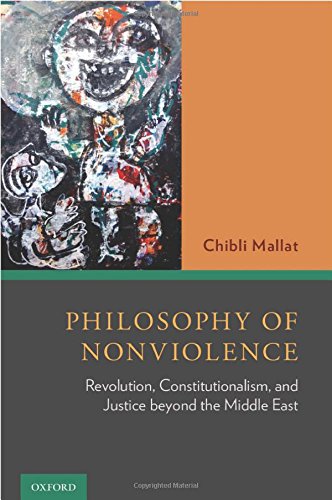Robert C. Hockett and Saule T. Omarova have posted
a draft of their important—hence highly recommended—new article, “Public Actors
in Private Markets: Toward a Developmental Finance State,” at SSRN, available here. The abstract:
The recent financial crisis brought
into sharp relief fundamental questions about the social function and purpose
of the financial system, including its relation to the “real” economy. This Article argues that, to answer these questions,
we must recapture a distinctively American view of the proper relations among
state, financial market, and development. This programmatic vision –
captured in what we call a “developmental finance state” – is based on three
key propositions: (1) that economic and social development is not
an “end-state” but a continuing national policy priority; (2) that the
modalities of finance are the most potent means of fueling development; and (3)
that the state, as the most potent financial actor, both must and often does
pursue its developmental goals by acting endogenously – i.e., as a direct
participant in private financial markets. In addition to articulating
and elaborating the concept of the developmental finance state, this Article
identifies and analyzes the principal modalities through which the modern
American developmental finance state operates today. Finally, the Article
proposes three broad strategic extensions of the existing modalities, with a
view to enabling the emergence of a more ambitiously proactive and effective
developmental finance state – and thus rediscovering a truly public-minded finance.
As Hockett
and Omarova note,
“our polity
never has been strictly ‘command-and-control’ or ‘hands-off’ in relation to our
economy. Rather, we have always sought means of proactively fostering and
furthering economic development and growth, and have done so through government
instrumentalities that act in markets as much as they act on them.
Our government is more than merely a market overseer and regulator – it is also
a direct market participant, acting not only to correct market failures or to
provide vital public goods but also to create, amplify, and guide private
markets in ways that enhance these markets’ potential to serve important
long-term public interests.”
Intriguingly,
they characterize the rhetorical strategy of the argument as one that
“identifies,
analyzes, and builds upon the distinctly American mode of mixing polity and
economy, in hopes of recovering a policy approach that the nation once had and
could use again now, after a major financial crisis. The tradition we seek to
recover traces its roots directly to ideas originally formulated by the
country’s first Treasury Secretary, Alexander Hamilton. We refer to that
tradition under the conceptual heading of the ‘developmental finance state.’”
However refreshing
the invocation of Hamilton, I’m not sure how significant or even true it is to view
this as a “distinctly American mode of mixing polity and economy,” for in the comparative
terms of welfare capitalism or capitalist democracy (keeping in
mind that such regimes ‘represent different ways of organizing not only the
transfer sector, represented by social welfare policy, but also the productive
sector of the capitalist economy’), this seems merely to bring the conventional
model of the “liberal welfare regime,” exemplified by the United States, closer
to a corporatist or even social-democratic model, an alternative
characterization that may not prove as rhetorically pliable to a fair- or
open-minded assessment of their proposal. In any case, I believe a move in this
direction would portend progress on several fronts, not the least of which
would involve movement toward satisfying moral and political values that have
been used as criteria for assessing the “real worlds of welfare capitalism,”
namely, (1) efficiency (of various economic kinds), (2) reduction of poverty, (3)
promotion of equality, (4) promotion of social integration and avoidance of
social exclusion, (5) promotion of social stability, and (6) promotion of
individual autonomy. On this, please see Robert E. Goodin, et al., eds. The Real Worlds of Welfare Capitalism (Cambridge University Press, 1999).
Here is a clear
and compelling conceptual outline and working definition of this “developmental
finance state:”
“Three
propositions form the basis of our argument. First of all, we assert the utmost
significance of pursuing socio-economic development as a continuous national project
that does not end once a country is sufficiently industrialized and modernized
to be considered a ‘developed’ economy. Development is not a particular
end-of-history state; it is an inherently dynamic phenomenon. Development is a
conscious pursuit of qualitative (not merely quantitative) growth and
adaptation to new environments; it is an evolutionary process of national
self-definition and reinvention. In today’s world, any ‘developed’ nation that
does not strive to develop risks losing its global competitive edge. In this
sense, the United States is a developing country, whether or not Americans
realize or admit it. We seek to re-introduce this critically important
normative concept into the public discourse.
Secondly, we
view this conscious pursuit of national development as a fundamentally
public-private enterprise. As the ultimate public, collective actor, the
federal government is well-positioned to formulate a national developmental
strategy. But its successful implementation would require the government to
utilize, deliberately and systematically, its ability to participate directly
in private market transactions as an endogenous, rather than merely exogenous,
actor. Via this explicitly participatory market-actor modality, the government
can lead the market from within – thus becoming an integral part of the private
market, altering some of the market’s potentially undesirable internal
dynamics, and empowering both the market and the nation.
Finally, we
deliberately focus on the use of financial techniques and financial instruments
as primary methods of the government’s pursuit of developmental goals in its
role as a market actor. Finance represents both the lifeblood of the economy
and ‘the nerves of the state’ – it is the principal link connecting the state
and the market. Finance is a universal productive input; it can be fairly
easily moved and re-deployed for a multitude of purposes.
Moreover,
the increasing financialization of the American economy in recent decades makes
finance a particularly potent lever of economic and political power. Therefore,
we view financial markets as the strategic arena in which America’s future
developmental trajectory will be decided. These three elements, inspired by and
building upon Hamiltonian ideas, define the contours of what we tentatively
call here a developmental finance state model. A ‘developmental
finance state’ can be defined as a state that pursues specific developmental
goals through direct participation in private financial markets as an
endogenous market actor.”
I hope this proves sufficient enticement for you to read the article.


















